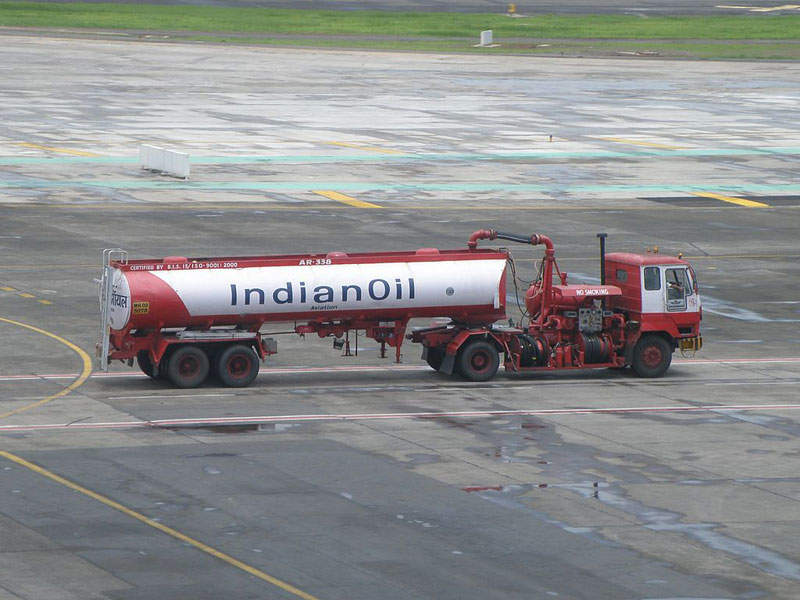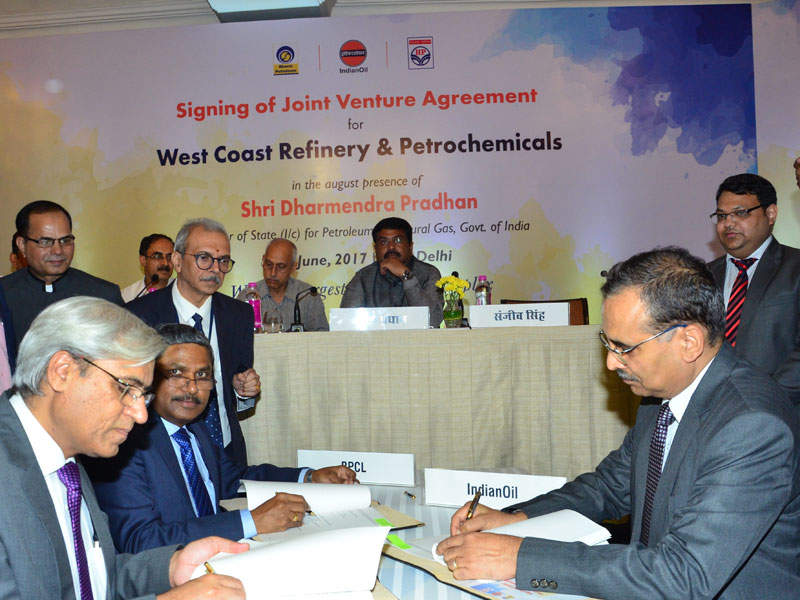Ratnagiri oil refinery and petrochemical complex is planned for development in Ratnagiri District, Maharashtra, India. It will be one of the world’s biggest integrated petrochemical complexes.
A special consortium company named as Ratnagiri Refinery and Petrochemicals (RRPCL) is developing the project. RRPCL is a joint venture between Indian Oil Corporation (IOC), Bharat Petroleum Corporation (BPCL) and Hindustan Petroleum Corporation (HPCL).
IOC holds a 50% stake in RRPCL, while BPCL and HPCL each hold 25%. The $44bn Ratnagiri oil refinery project will have a processing output of 60 million metric tonnes per year (Mtpa) and is expected to be commissioned by 2023.
Ratnagiri oil refinery development details
Ratnagiri oil refinery received environmental clearance in March 2018 from the Ministry of Environment, Forest and Climate Change.
A memorandum of understanding (MoU) was signed between Saudi Aramco, IOCL, BPCL and HPCL for developing the oil refinery in April 2018.
Abu Dhabi National Oil Company (ADNOC) signed a framework agreement with the joint venture for the project’s development.
IOCL, BPCL and HPCL, along with Saudi Aramco and ADNOC will develop the refinery in a 50:50 partnership.
Ratnagiri oil refinery details
Ratnagiri oil refinery will consist of three main blocks, consisting of the refinery, aromatics, and petrochemicals. It will comprise 50 high-efficiency refining unitsbuilt on 15,000 acres of land. Another 1,000 acres on India’s west coast will be used for development of marine and port facilities of the refinery.
The refinery block will consist of three crude oil units with a capacity to process 1.2 million barrels of crude oil per day.
Its primary processing facility will comprise three trains of crude and vacuum distillation units, while the secondary processing area will feature a feed hydrotreating unit and a fluid catalytic cracking/hydrocracker system.
Ratnagiri oil refinery’s bottoms upgradation facility will include delayed coking hydrotreatment units, while the product treatment facility will feature units for processing liquefied petroleum gas, motor spirit, diesel and fuel gas.
The aromatics block will include a combination of units designed to produce para-xylene, benzene and toluene.
The petrochemical block will include a dual feed cracker, which will use C4 gases and refinery naphtha to produce petrochemical feedstock for downstream polymer units.
Marine facilities of the refinerywill include three single point moorings(SPMs), pipeline end manifold, four 48in submarine pipelines, small jetties and anchorage areas. Therefinery’s SPMs will receive crude oil from very large crude carriers (VLCC) with a capacity of 325,000dwt.
The refinery will also see construction of five jetties in Girye bay, Vijaydurg,15km from the site. Jetties will be used for the import of crudes and condensate and export of LPG and condensate.
Feedstock and product details
Ratnagiri oilrefinery will produce automated and aviation turbine fuel(ATF) of Euro-VI standards and petrochemical feedstock for producing 18 million tonnes (Mt) of petrochemical products.
Derivatives from the petrochemical block such as ethylene, propylene and others will be used to produce a variety of other petroleum substances.
Its C6 stream will be further utilised to extract benzene from the extraction unit, which will also recycle C6 raffinate and fully hydrogenated C5 back to the cracker.
Additionally, the C9 stream and hydrogenated pyrolysis gasoline are expected to be sold for further end-uses.
Infrastructure and other facilities
The plant’s crude oil terminal will comprise 44 floating roof type crude oil storage tanks with a total capacity of 2.64 million cubic metres. The tanks’ capacity will be equivalent to approximately 13 days of crude processing capacity.
The refinery complex will house its own utility and offsite facility block, which will include a desalination plant, a power plant, compressed air and nitrogen system, cooling water device and fuel oil/fuel gas system.
A desalination plant for the complex will be built 15km from the refinery. It will consist of three reverse osmosis desalination modules with the capacity to process 180 million litres of water a day and seven pipelines with a diameter of 48in.
Water for the refinery and petrochemical complex will be supplied from Arabian Sea.
Power for the desalination plant and crude oil terminal will be sourced from the Maharashtra state grid.
An offsite storage facility unit for storing crude oil, as well as intermediate and finished products will also be developed as part of the project.
Contractors involved
Engineers India carried out the preliminary configuration study for the project, while the market study for the chemical and petrochemical products was conducted by IHS.






